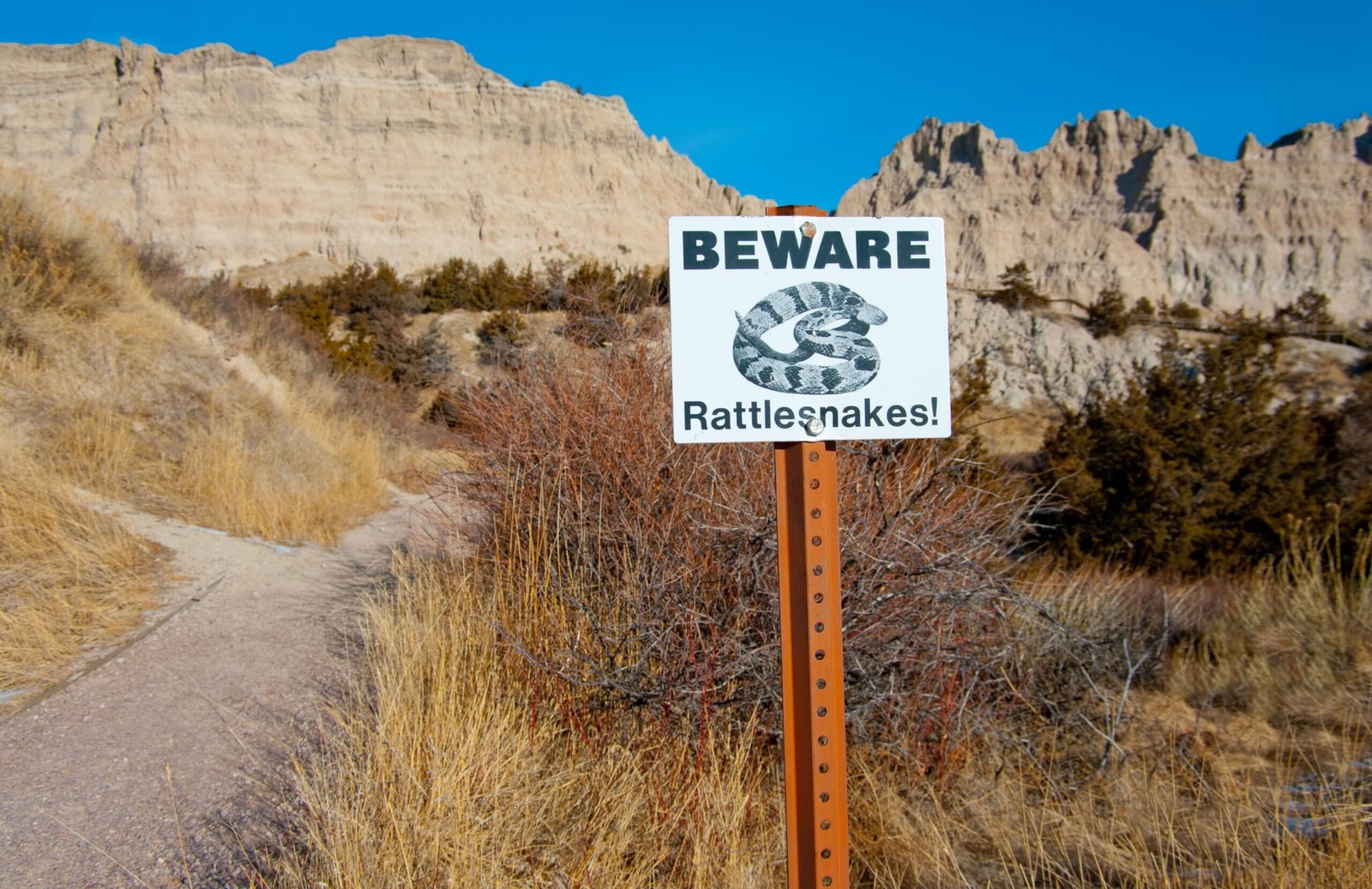Getting on the trail in the western United States means entering one of nature’s most awe-inspiring territories. The expansive landscapes offer breathtaking vistas, challenging terrain, and unforgettable memories. However, these same rugged environments are also home to some of North America’s most formidable residents – rattlesnakes.
The western states harbor remarkable rattlesnake diversity, with Arizona alone hosting fourteen different species. These remarkable serpents aren’t just lurking predators waiting to attack hikers, though. They’re sophisticated hunters that generally want nothing to do with humans. Understanding their behavior, habitat preferences, and warning signs can transform your hiking experience from anxiety-inducing to genuinely educational.
Know Your Western Rattlesnake Species
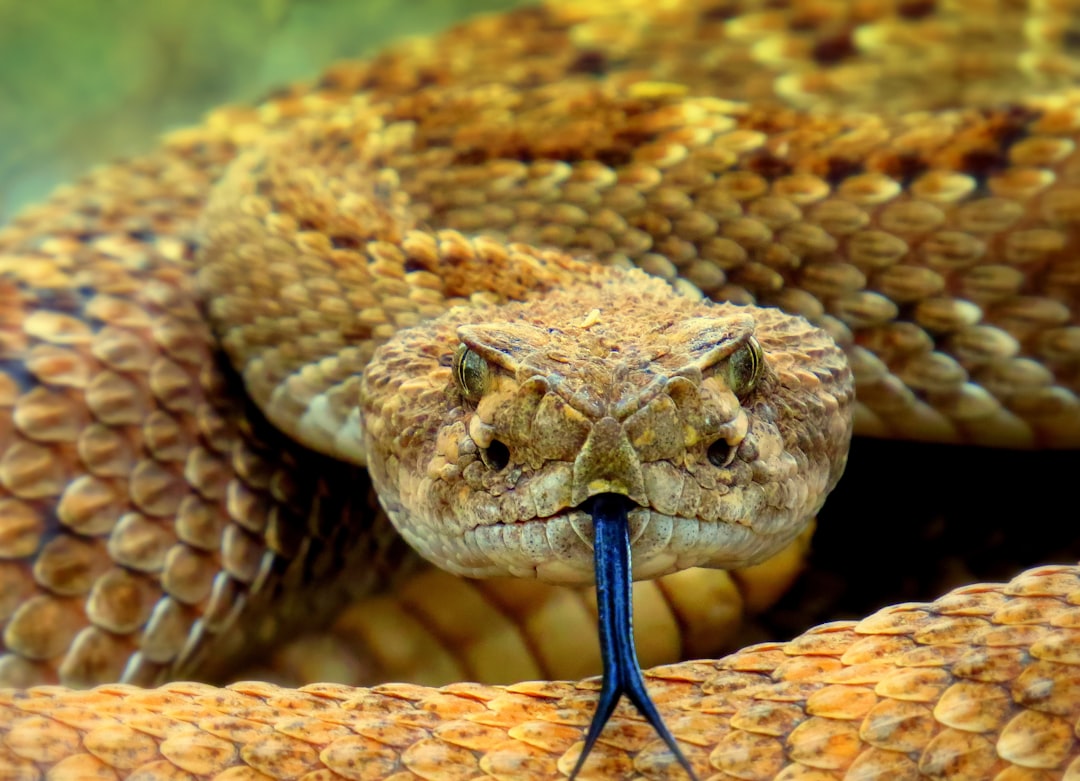
Arizona leads with 14 species, while the Southwest region hosts the greatest diversity of these venomous reptiles compared to other areas of the country. The variety is staggering when you consider that each species has adapted to specific environments.
Crotalus oreganus oreganus, or the northern Pacific rattlesnake (a subspecies of the western rattlesnake), is the species of rattlesnake found in our region. They are generally considered less aggressive than their relatives, the timber and the western diamondback rattlesnake. They average about three feet in size, but the biggest among them reach lengths of five feet.
The western diamondback rattlesnake commands respect across the Southwest. The western diamondback is the largest of all rattlesnakes in Arizona, reaching 6 feet or more in length in some cases. The toxicity level of their venom is actually believed to be lower than that of other species on this list, however, because of their large size they are able to deliver high doses, making them quite dangerous.
Meanwhile, The Mojave Rattlesnake , or “mojave green” as people like to say, is often confused for the similar-looking Western Diamondback, and visa versa. The Mojave is very commonly seen in flat, sandy desertscrub areas, and less likely to be seen in mountainous or rocky regions. It’s a large snake, reaching about 4′ in length as an adult. This snake has a reputation of being an overly dangerous snake, as it is quick to become defensive and has a powerful neurotoxin in many parts of its range. These snakes should always be avoided if seen.
Master the Art of Identification
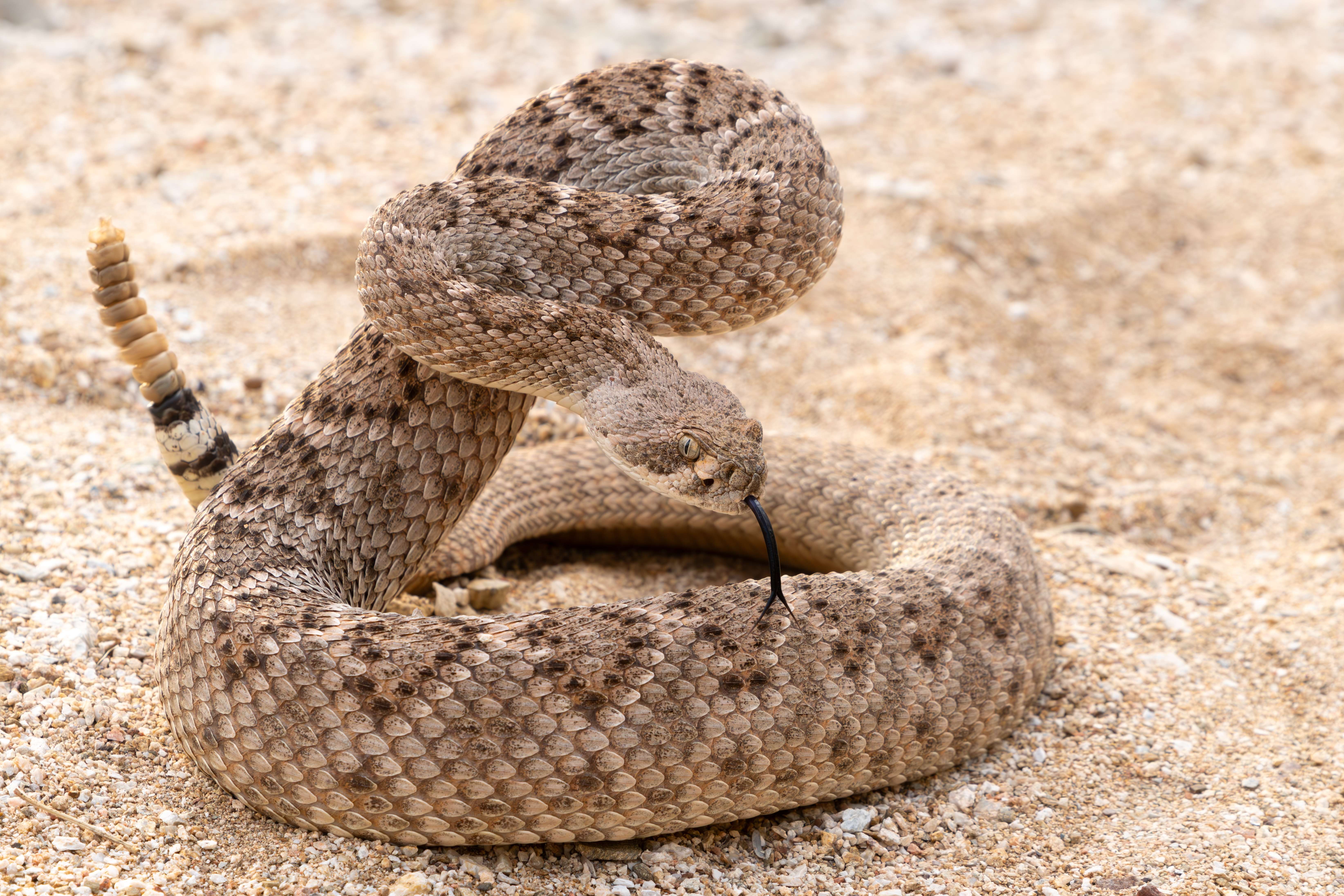
The easiest way to identify these snakes is the obvious sign of a rattle on their tail and their distinctive triangular-shaped head. They also have a thinner neck compared to non-venomous snake species that have heads as wide as the rest of their body. This triangular head shape is your first major visual clue.
However, the rattle isn’t always present or functional. Each time a rattler sheds its skin it gets a new rattle segment. However, the rattles may break off or be damaged so some adult snakes will have no rattle. It is rare to find a rattlesnake with more than 8 – 10 rattles.
Gophersnakes (the most widespread and abundant snake species in Utah) are often mistaken for rattlesnakes because when alarmed, gophersnakes hiss and vibrate their tails and are similarly patterned. A rattlesnake’s tail is wide and blunt – and tipped with a rattle, of course – while a gophersnake’s tail is slender, pointed, and lacks a rattle. Rattlesnakes also have broad, triangular-shaped heads and vertical eye pupils, while non-venomous snakes in Utah have longer snouts and round pupils.
They range in length from 1 to 8 feet (30 to 240 centimeters). Most adult rattlesnakes are somewhere in the middle of that, though. While each (sub)species has its own distinct features, there are a few general characteristics by which you can recognize a rattlesnake.
Understand Their Activity Patterns
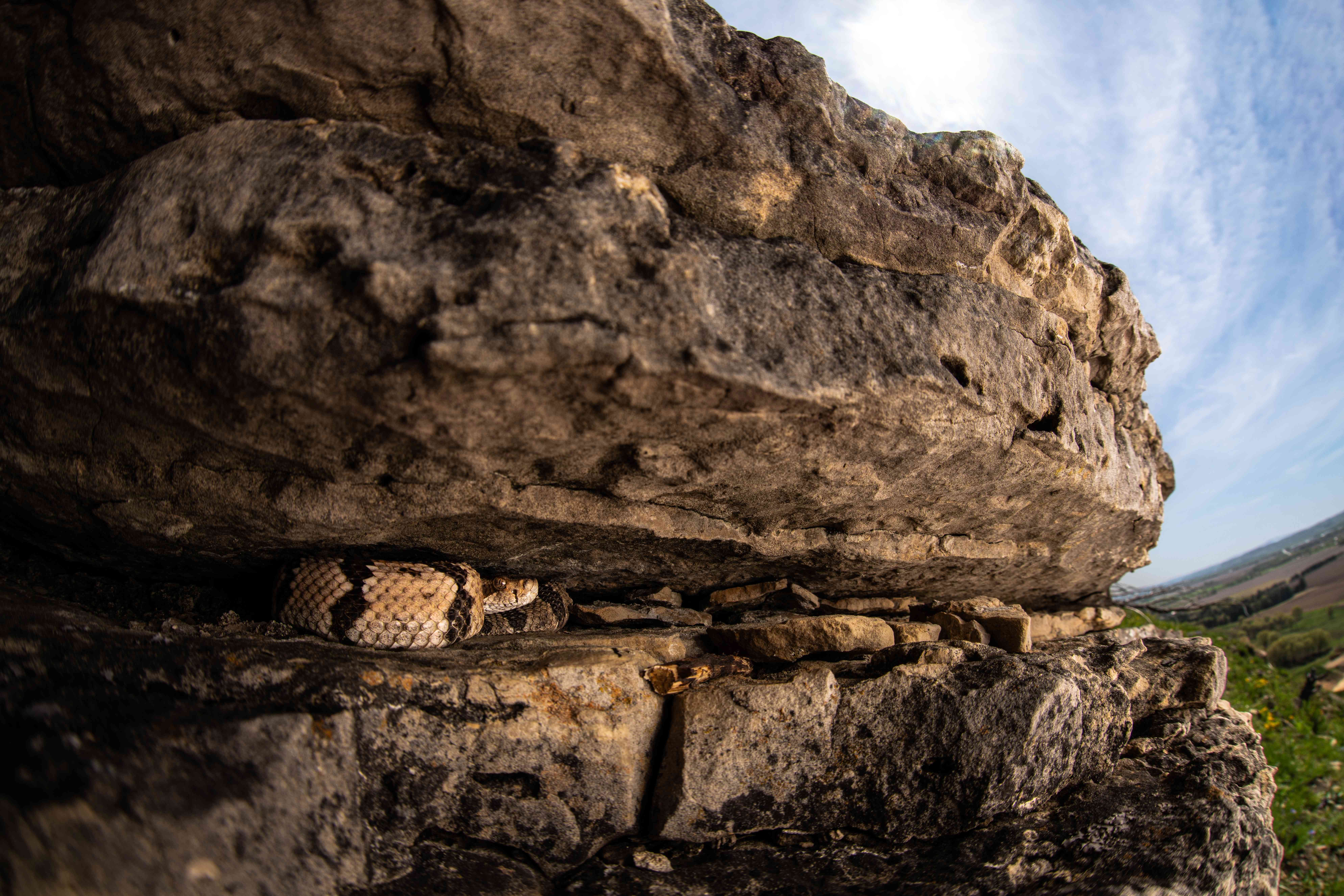
In general, rattlesnakes are most active in temperatures between 70 and 90 degrees Fahrenheit (21 to 32 degrees Celsius). This is their optimal basking range. Therefore, it’s impossible to say exactly when rattlesnakes are most active during the day. That simply depends on the day itself: where you’re hiking, the season, and the weather.
They are most active in the early morning and late afternoon. While they can be out any time, rattlesnakes are most active in the morning and from dusk into the night. They hunt mice and rodents in the darkness because they can sense body heat with special organs on their face.
It’s a myth that rattlesnakes sleep at night. Many rattlesnake species are nocturnal during summer, avoiding the heat during the day. You’re much more likely to encounter a rattlesnake at night in hot desert areas than in humid and temperate areas. In spring or fall, rattlesnakes tend to be more active during the day.
The snakes are crepuscular and nocturnal. So they are likely to be resting during the day. I always look for them beside the trail where shade meets sunlight. The snakes prefer to sun themselves where cover is nearby.
Learn Their Preferred Hiding Spots

They camouflage well in dried grasslands, rocky dirt patches, and under dried wood and tree stumps – and you typically hear them before you see them. This natural camouflage makes them masters of concealment in their preferred environments.
Snakes, both venomous and non-venomous, prefer quieter, more secluded areas that are far away from populated hiking trails. If you’re trying to avoid encountering a snake, stick to designated hiking trails. If, however, you do go off track, move carefully. If you are moving through long grass, use a large stick or walking pole to push the long grass aside and check for safety.
Rattlesnakes can’t regulate their temperatures, so they look for sunny spots to warm up after a cool night. Look for them basking on rocks, logs, or even trails during cooler parts of the day.
Rattlesnakes “hunt shelter constantly. They hide under these logs. They hide in stump holes – under anything they can,” Clamp said. They also like woodpiles, thick brush and spaces under boulders, experts say.
Recognize Their Warning System
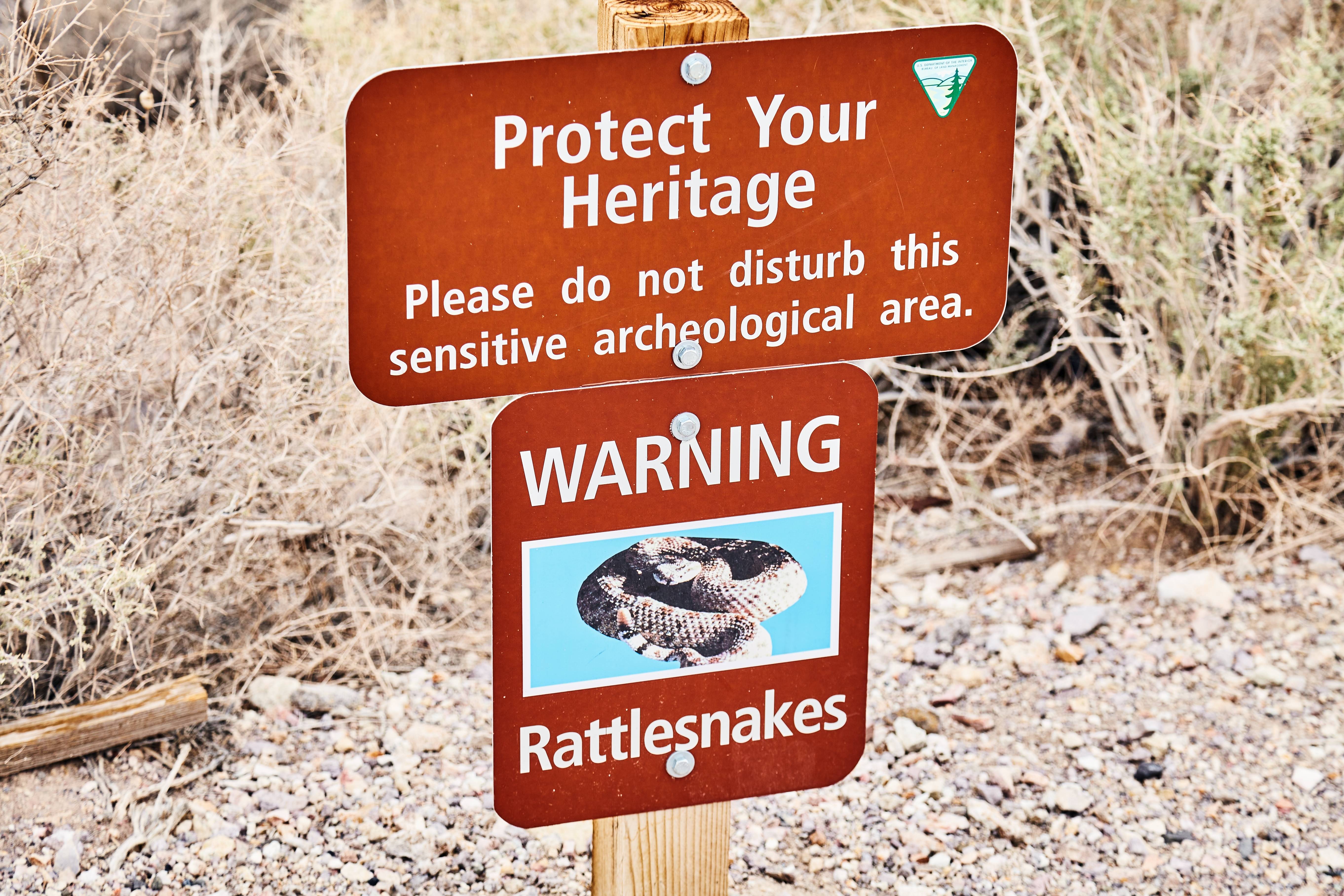
buzzing away and standing tall, this is not a sign that it’s about to attack. A rattle is not a battle cry! It’s just a warning, saying “hey, just letting you know I’m here, so let’s not meet!” It’s actually quite considerate if you think about it. This is defensive behavior, not aggression.
If you hear a buzzing or rattling sound, it may be a rattlesnake warning you to stay away. If you hear a rattling sound, stop and try to locate the snake. Slowly back away in the opposite direction. The snake is warning you to stay away, so take its advice.
Honestly, the rattlesnake’s warning system is one of nature’s most courteous gestures. It’s tempting to villainize them as the only local, venomous snake, but they’re really very courteous about giving you time to avoid them. After all, they’re nice enough to warn us by shaking their tails when we get too close. And remember: their rattle isn’t a threat, it’s a polite public service announcement to please keep your distance.
If you hear the warning rattle, move away from the area and do not make sudden or threatening movements in the direction of the snake · Remember, rattlesnakes do not always rattle before they strike! This last point is crucial for hikers to remember.
Practice Proper Hiking Safety Techniques
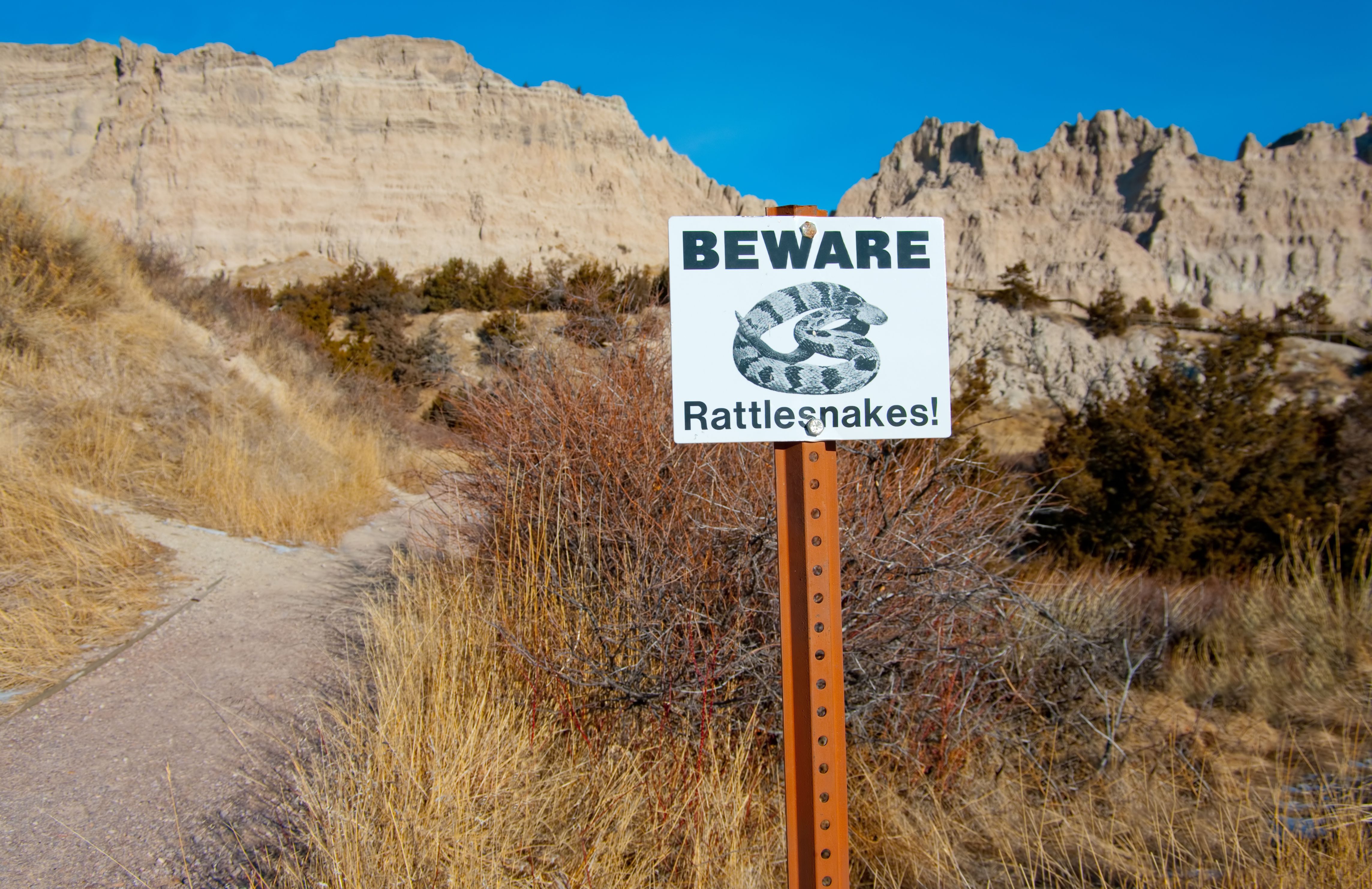
Stay on designated paths and trails to ensure your safety and to minimize negative impacts on wildlife. Be mindful and watch your step, especially if walking through tall grass or around bushy zones.
Step on top of logs and rocks and not over them. Don’t step or put your hands in areas you can’t see into. Check around stumps and logs before sitting on them. Wear hiking boots and long pants, if possible, when hiking.
When you are out hiking, make sure to always watch the trail ahead of you, and to check carefully before stepping over rocks, reaching onto ledges or sitting down on a rock or log. This heightened awareness becomes second nature with practice.
Wear hiking boots. This simple advice can make a huge difference. Never go barefoot or wear sandals when walking through wild areas. When hiking, stick to well-used trails if possible. Avoid tall grass, weeds and heavy underbrush where snakes may hide during the day.
Understand Strike Distance and Safety Zones

Experts recommend staying at least 3 feet away. The reason for this is that snakes cannot strike more than half the length of their body. While western rattlesnakes are usually only around 3 feet, there are reports of them growing up to five-and-a-half feet long. Consequently, it is best just to give them distance.
Rattlesnakes can strike half to three-quarters of their body length. Because northern Pacific rattlesnakes average around three feet, that means they can strike one to one-and-a-half feet. So, if you spot a rattlesnake, just take two giant steps backward and the snake will likely be on its way.
It’s a good idea to stay as far as possible from any rattlesnake, aim for at least 10 steps away, to ensure safety no matter which direction the snake moves. It’s a good idea to stay as far as possible from any rattlesnake, aim for at least 10 steps away, to ensure safety no matter which direction the snake moves. If the snake won’t move off the trail, it’s safest to wait it out or turn back. Don’t try stepping over or around it, unless you can bypass it at a safe distance – and watch where you step.
Rattlesnakes can strike from a distance of half their body length. Keep this calculation in mind during any encounter.
Know What to Do During an Encounter
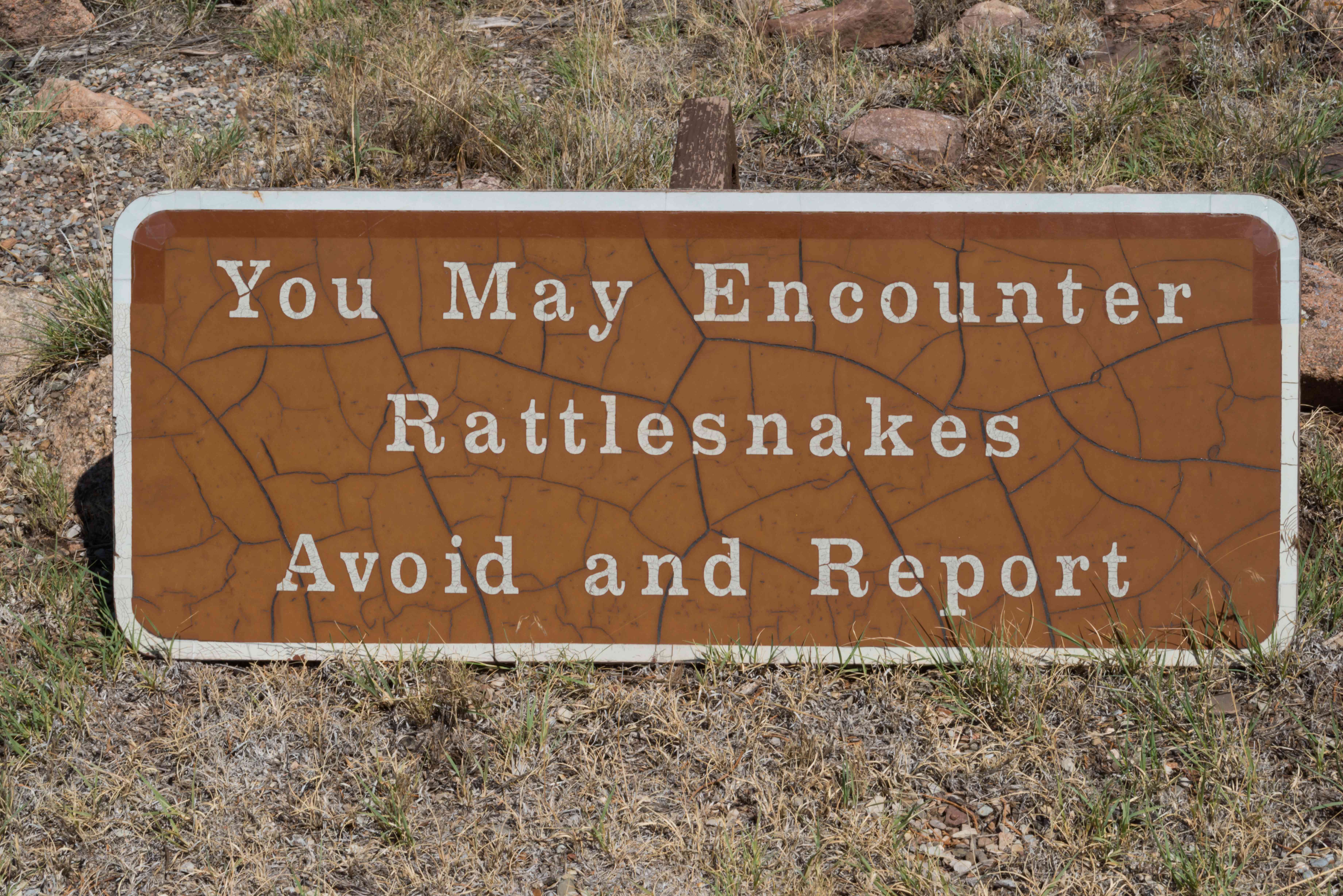
If you encounter a snake while hiking, the best thing you can do is avoid it. After spotting the snake, your best bet is to move away slowly. Take pictures from a distance using the zoom feature on your phone or camera.
Rattlesnakes aren’t aggressive to humans unless threatened or frightened. They eat mice and rodents and are shy of bigger animals. If they sense you, they will usually try to escape. Give them space to do so.
Don’t wave things at them because that may agitate them. Don’t try to push them off the trail with a stick – that’s often how people do get bitten. This is where many hiking encounters go wrong.
Remain calm and do not panic. Stay at least 10 feet from the snake. Make sure to give it plenty of space. Do not try to kill the snake. Doing so is illegal and greatly increases the chance the snake will bite you.
Understand the Reality of Rattlesnake Aggression
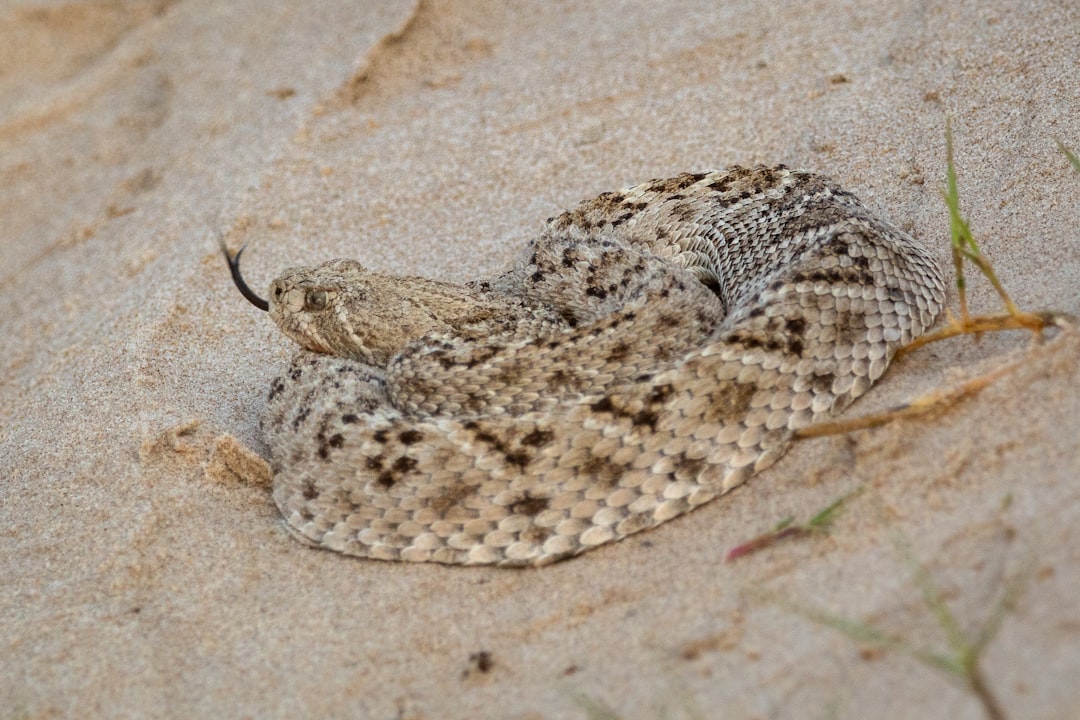
Rattlesnakes can’t eat us, have no reason to attack us, and really, they have no idea what we are. If rattlesnakes were actually aggressive, not one of us would survive a hike in any natural area in Arizona, and I’d certainly be dead several times over. Fortunately, they’re not, and you can breathe a sigh of relief that personal stories about rattlesnakes attacking unprovoked are very overblown.
It’s true that rattlesnake bites can be extremely dangerous. But they’re not aggressive, belligerent, or high strung. They only bite without warning when trodden or touched.
In most cases with hikers, a bite is a snake’s last line of defense, and will only be used when a snake sees no alternative. If you give the snake space and choice, they will likely ignore you. This changes the entire dynamic of snake encounters.
“Like most animals, rattlesnakes fear humans and will do anything they can to avoid us,” DWR Native Species Coordinator Drew Dittmer said. “However, that changes if a snake thinks it’s threatened and there’s no way to escape. In that situation, the snake will often strike to protect itself. Respect the snake and its space, and you will be safe.”
Be Aware of Water Hazards
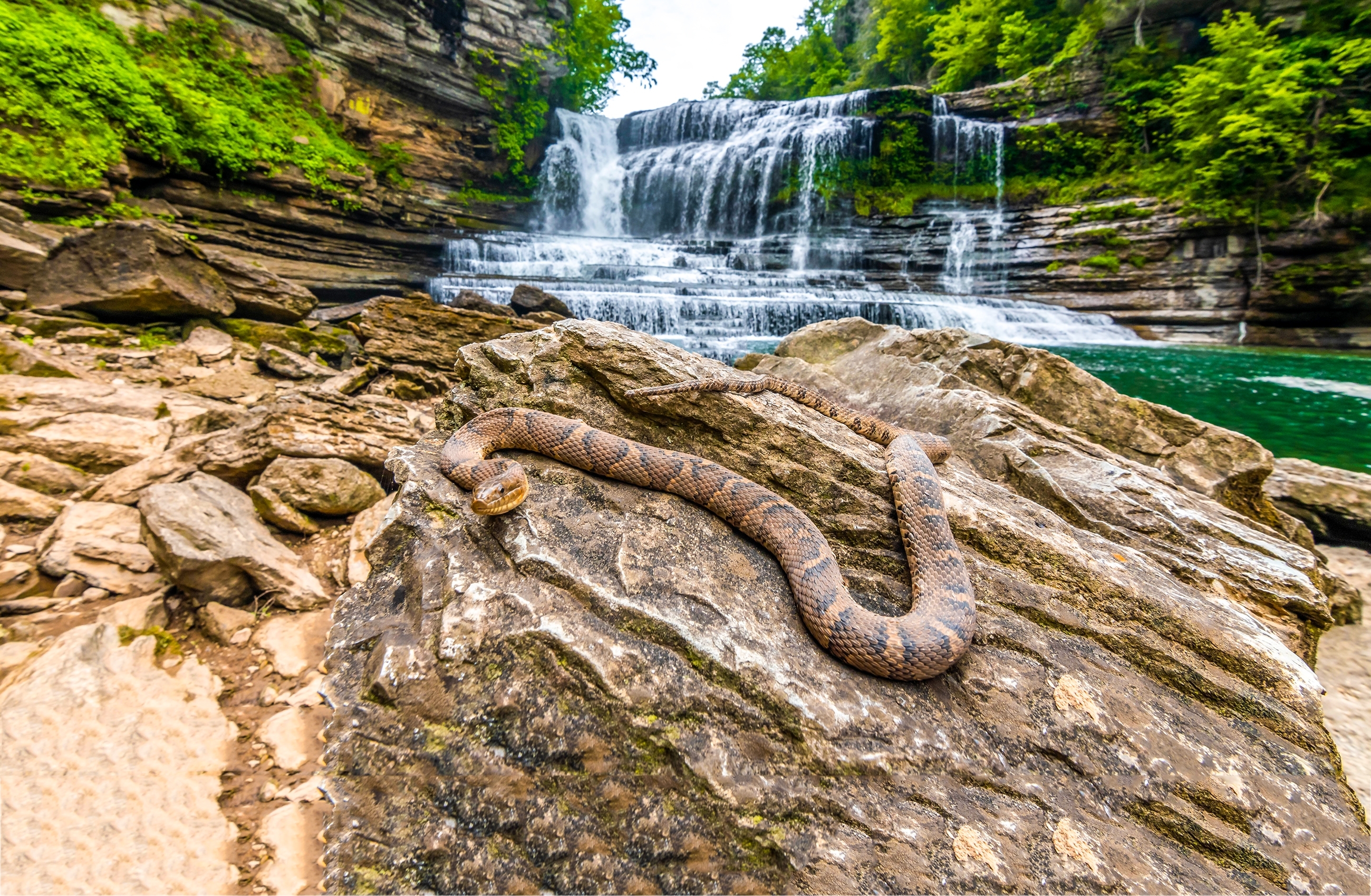
Rattlesnakes can swim, so avoid grabbing what might appear to be a branch or a stick in the water. This surprising fact catches many hikers off guard.
Rattlesnakes can swim, so be careful about grabbing what look like sticks or branches in lakes and rivers. Never grab “sticks” or “branches” while swimming in lakes and rivers. Rattlesnakes can swim. This behavior extends their reach into aquatic environments where hikers might feel safer.
Think twice before reaching into or near water sources during your hikes. That floating branch might not be what it seems, and stream crossings require the same vigilance as terrestrial terrain.
Consider Seasonal and Geographic Factors
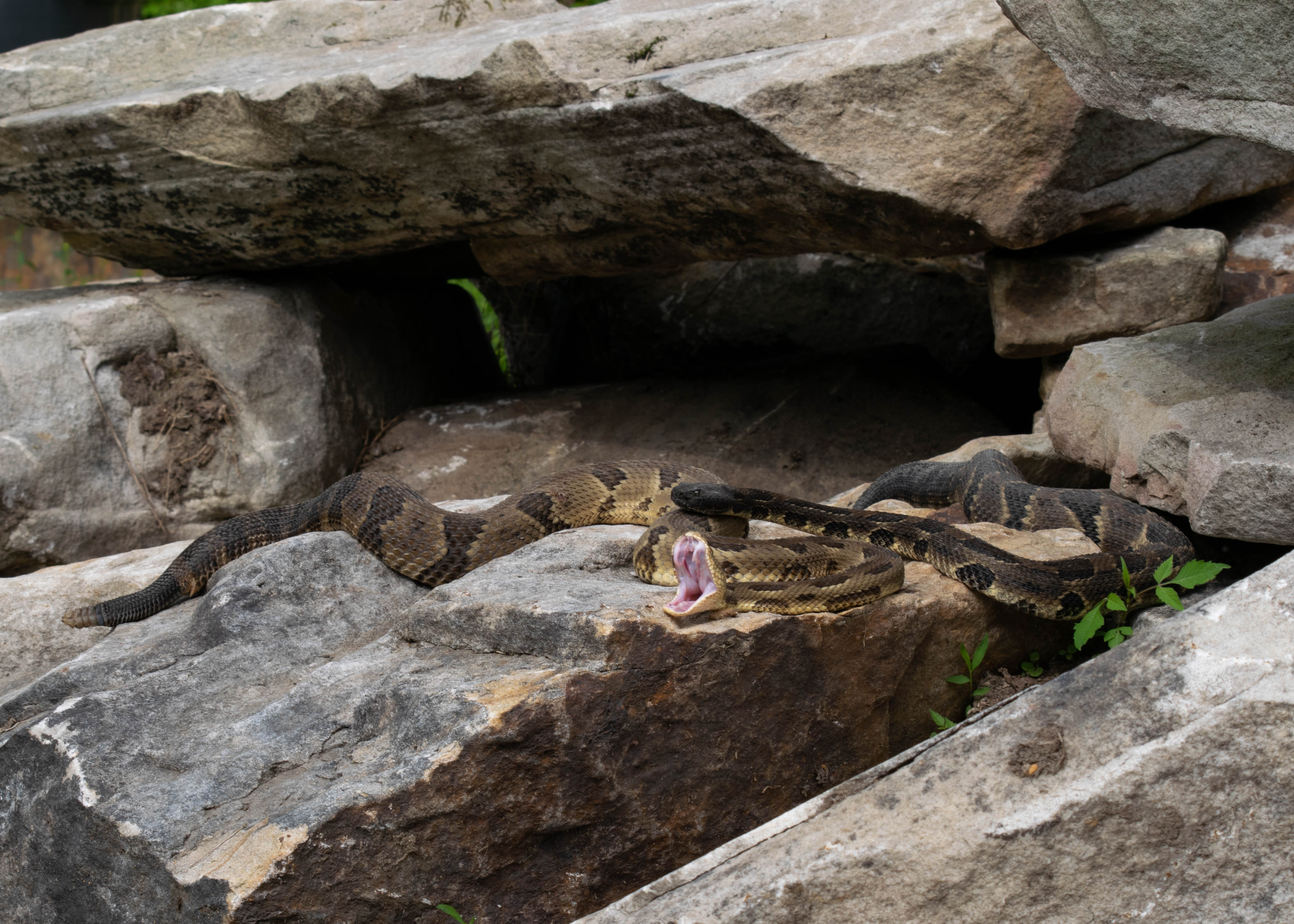
Rattlesnakes are usually active during the warmer months of the year, from April to October. March through October is considered rattlesnake season in Arizona, and knowing how to avoid a dangerous rattlesnake encounter for both you and your pets, and what to do if you do get bit, can be the difference between life and death. Keep your eyes open for rattlesnakes basking in the sun, especially in the cooler months.
Sonoma County’s rattler is the northern Pacific rattlesnake, most active between April and October. While it’s rare for a human to suffer a rattlesnake bite, and extremely rare for a human to die from a bite, here are some rattlesnake facts to help you stay safe on the trail.
This is the time of year when Utah rattlesnakes are on the move, looking for water, warmth and rodents. Due to ongoing drought conditions, Utahns may see more snakes in their yards or irrigated fields, as the snakes search for water and prey. Drought conditions can push rattlesnakes into areas where they might not normally be found.
Rocky, high-elevation slopes are the most common place in Utah to encounter rattlesnakes – typically while someone is out hiking. However, you can encounter rattlesnakes in lower-elevation areas, as well.
Understand Bite Statistics and Medical Reality
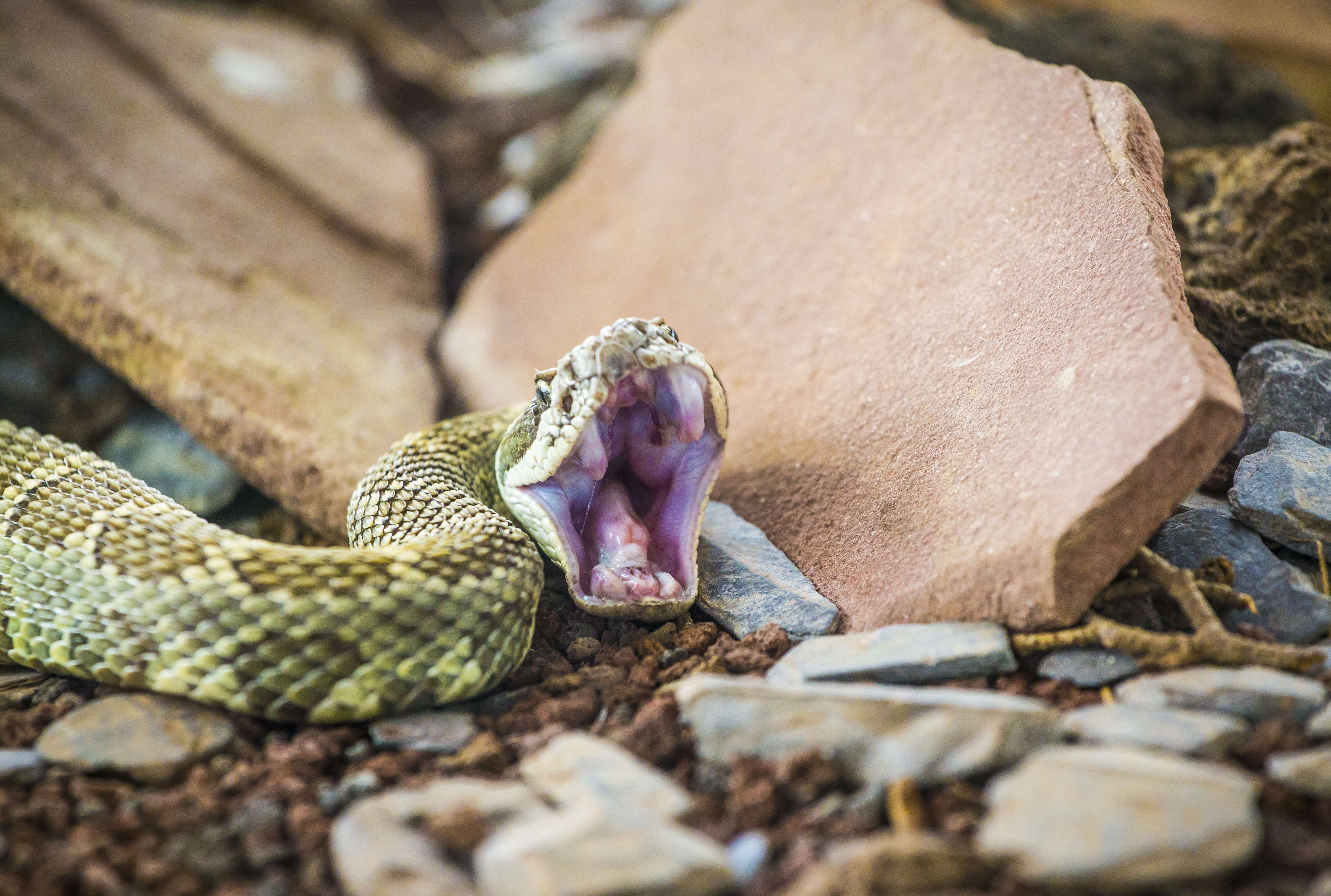
Roughly 7,000–8,000 people are bitten by venomous snakes each year in the United States, and about five of those people die. These numbers provide important context for actual risk assessment.
Rattlesnakes accounted for 74 (90.2%) of the 82 deaths for which the species was known or which occurred where rattlesnakes are the only native crotalids. Rattlesnakes accounted for 74 (90.2%) of the 82 deaths for which the species was known or which occurred where rattlesnakes are the only native crotalids.
The good news is the odds of being bitten by a rattlesnake are low. In a state of 39 million people, approximately 300 rattlesnake bites are reported annually to the California Poison Control System. These statistics put the actual risk into perspective.
One fact that may help you relax is that 40% – 60% of rattlesnake bites are “dry bites,” meaning no venom was injected. Another fact that should help you relax is that rattlesnake bites are very rarely deadly. Advances in anti-venom have made poisonings from a rattlesnake bite almost nonexistent, as long as you seek medical attention immediately.
Know Emergency Response Procedures

The first thing to do if bitten by a rattlesnake is to call 911. The next step, which may be difficult, is to relax. Emergency response time becomes critical in bite situations.
The most important thing you can do if you are bitten is to SEEK MEDICAL ATTENTION. A rattlesnake bite is ALWAYS a reason to call 911. Medical professionals stress this point consistently.
Try to keep the bite site lower than the heart of the bite victim. And here’s the really hard part, you want to keep the person who was just bitten by a rattlesnake calm. But the faster your heart pumps, the faster the venom spreads. So a calm person is the best way to keep that venom localized. Keep them calm and still if possible. Remove all tight fitting clothing and jewelry around the bite site since the site will swell significantly.
One important safety precaution is to always have an emergency plan. Before setting out, you should know where the nearest hospital is. This preparation can save precious time during a crisis.
Practice Prevention Through Awareness
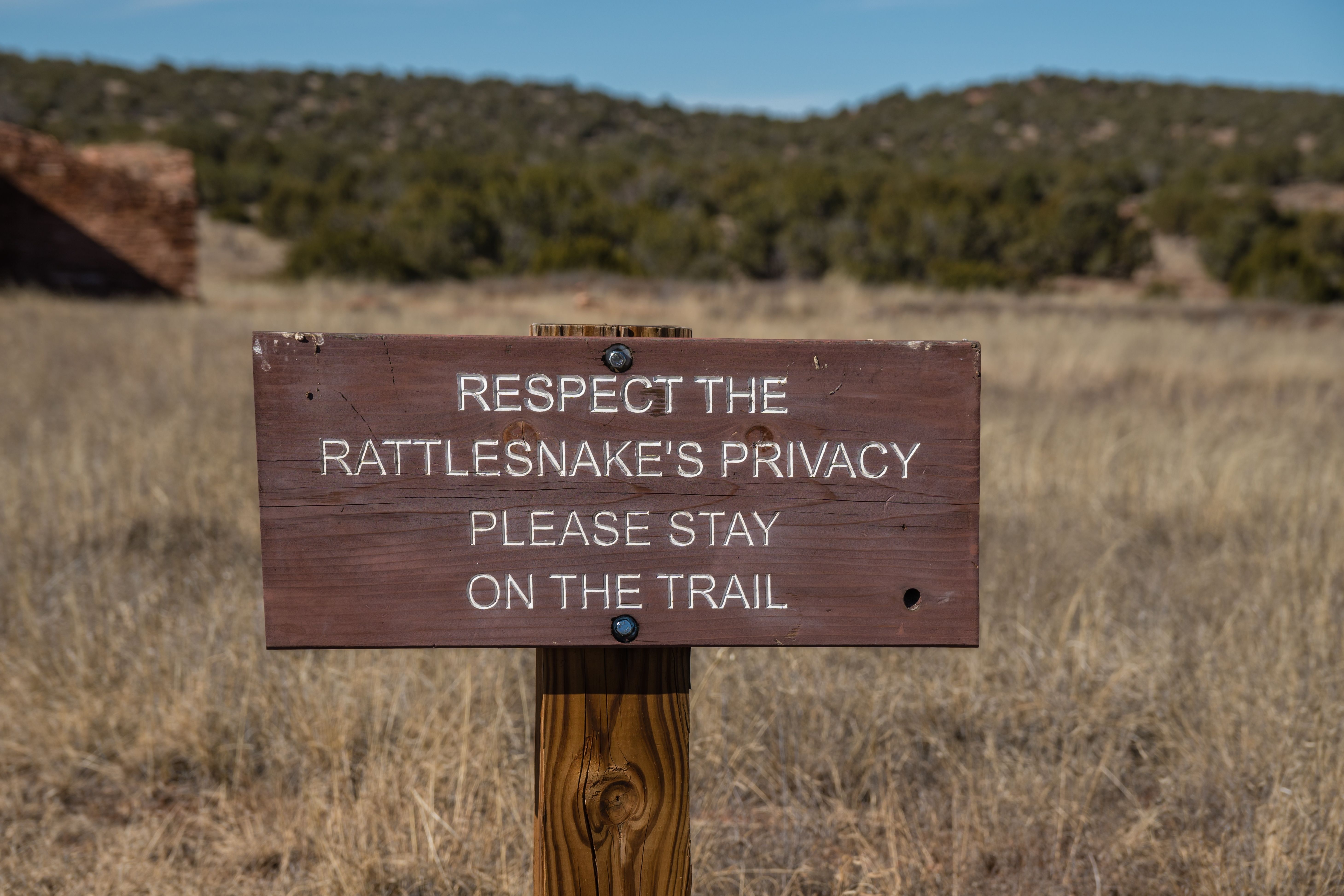
If hiking with small kids, make sure they stay on trail and near an adult. If your dog is especially adventurous and likes to sniff everything, it’s probably best to keep them on a leash to avoid an encounter.
Consider bringing a small field guide with you when you hike. This will allow you to identify species as you encounter them as opposed to trying to remember the different species. Field identification guides can be invaluable tools.
Do not touch what may appear to be a dead snake. Do not handle a freshly killed snake – it can still inject venom. This advice could prevent some of the most avoidable bites.
However, you shouldn’t attempt to get close enough to identify what kind of snake it is. If you can’t identify the snake from a distance, leave it alone and treat it as if it were venomous. When in doubt, assume danger and act accordingly.
Appreciate Their Ecological Role

Although a bite can lead to serious injury, rattlesnake and other species generally avoid contact with humans. They are an important part of the ecosystem and an unsung hero of pest control. A single rattlesnake can eat up to 192 mice a year, preventing the spread of disease and keeping our environment healthy.
Much like humans, rattlesnakes are just trying to survive. In fact, rattlesnakes play a vital part in the desert ecosystem. Rattlesnakes don’t want to run into you any more than you want to meet up with them. This perspective shift helps frame encounters more positively.
Andrews said rattlesnakes play a key role in balancing the environment. “They’re mostly eating mice and rats. Their presence indicates a healthy ecosystem functioning as it should.
I think understanding rattlesnakes as beneficial wildlife rather than dangerous adversaries completely changes the hiking experience. These remarkable creatures deserve our respect and coexistence rather than fear and elimination.
Conclusion
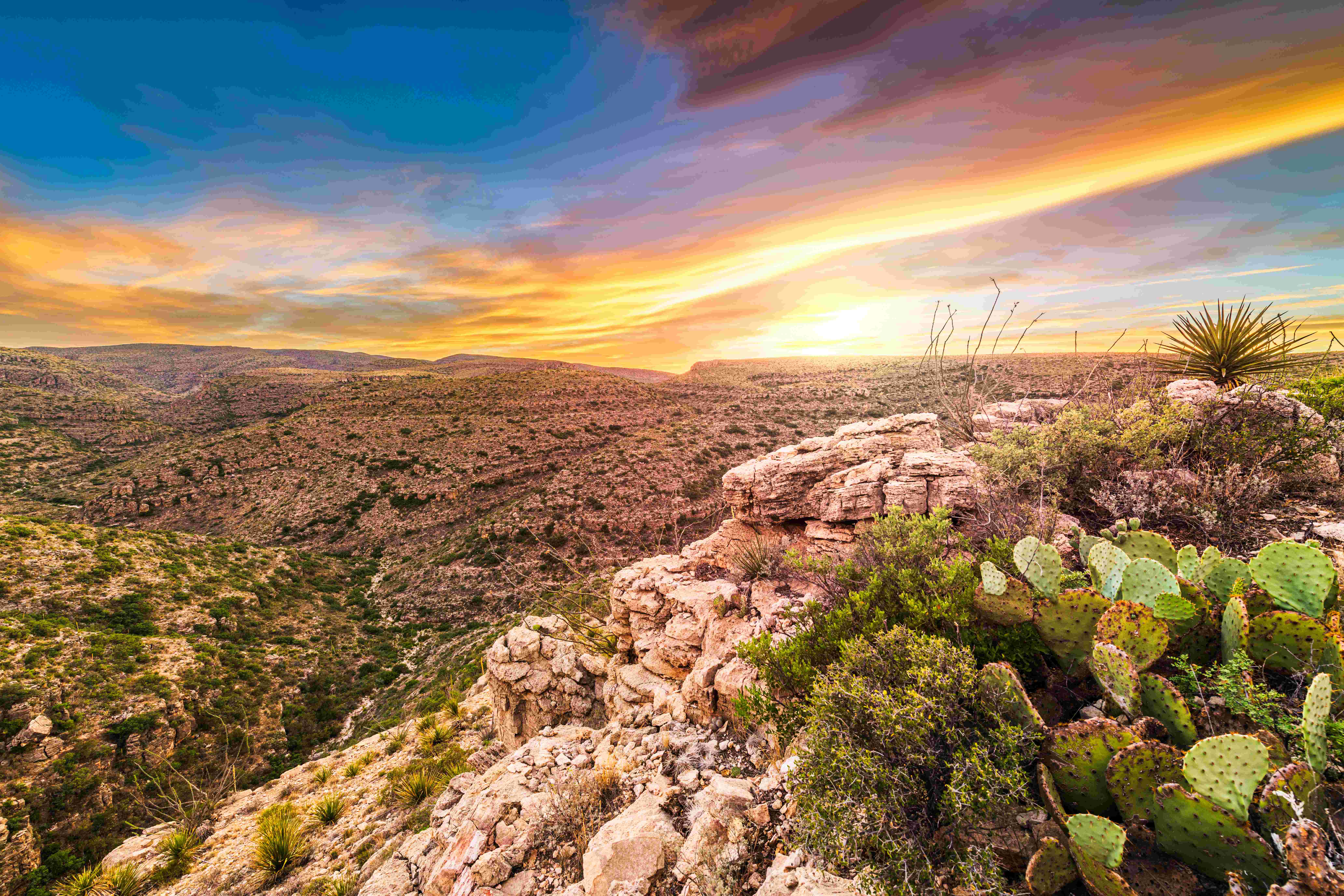
Hiking in rattlesnake country doesn’t require paranoia – it requires preparation, respect, and knowledge. In fact, you’ll be happy to know that according to the U.S. Department of Fish and Wildlife, your chances of dying of a venomous snake bite is nearly zero (1 in 50 million will die). So please do NOT let fear of rattlers stop you from enjoying your trails!
The western wilderness offers some of the planet’s most spectacular hiking opportunities. Rattlesnakes are simply one element of that wilderness experience, no different from steep terrain, weather changes, or challenging navigation. With proper awareness and respect for these remarkable reptiles, you can explore confidently while appreciating the complete ecosystem around you. The trails are waiting, and now you’re equipped to enjoy them safely.
What’s your experience been with rattlesnakes during your western hikes? Share your encounters in the comments below.
